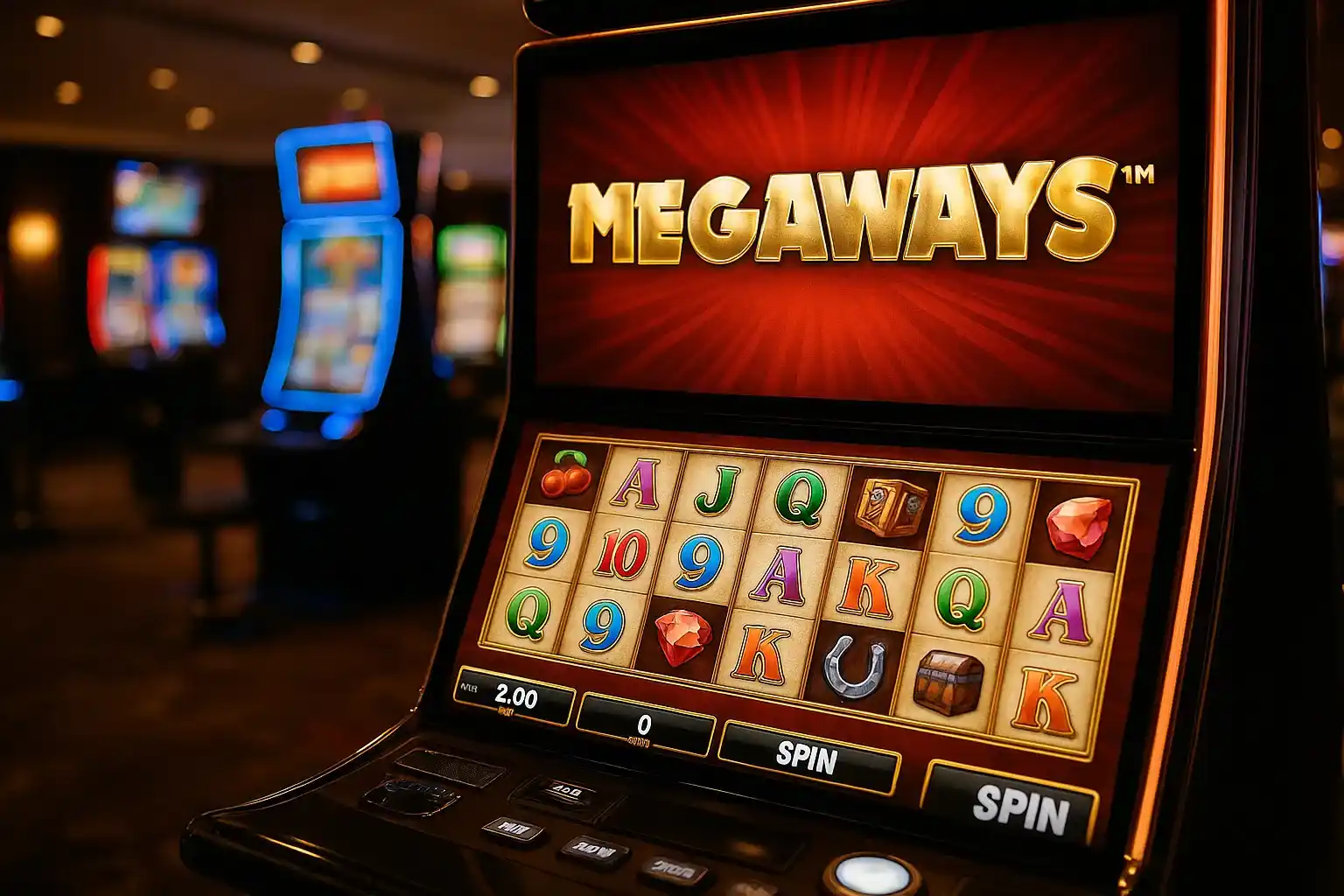Megaways slots exploded onto the scene like a band with a breakout single—suddenly everyone was talking about “thousands of ways to win” and cascading reels. I remember the first time I loaded Bonanza by Big Time Gaming; the reels looked chaotic, the payline counter felt like it was glitching (117,649 ways? seriously?), and my brain did a weird mix of “this is genius” and “this is gimmicky.” Years later, after tracking RTPs, volatility curves, and my own bankroll swings, I can say Megaways are neither pure hype nor guaranteed future—they’re a smart evolution of slot design that demands a smarter player response.
The core question—overrated or the future—comes down to how you value unpredictability, game depth, and variety. For some, the sheer dynamism of changing reel heights, tumbling wins, and bonus buy features is everything modern slots should be. For others, the math behind Megaways (high variance, often middling RTPs after feature buys, relentless sensory overload) makes them exhausting or flat-out expensive if you aren’t disciplined.
How the Megaways Engine Actually Works
Megaways is a patented reel mechanic: instead of fixed reels and paylines, each reel can display a variable number of symbols per spin. Typical setups have six reels, each showing anywhere from two to seven (sometimes more) symbols. Multiply those together and you get the “ways” count—anything from a few hundred on a low-symbol roll to the famous 117,649 (or even into the millions on some newer titles). Wins pay left to right, and symbol size doesn’t need to align on strict lines; as long as the symbol appears in at least one position on consecutive reels, you’re good.
Because every spin reshuffles the reel height, you get this feeling that no two spins are truly alike. Add in cascading wins (where winning symbols disappear and new ones drop in), mystery symbols, progressive multipliers in bonuses, and you’ve got a cocktail of unpredictability. That unpredictability is the chief selling point—and the main reason bankroll management matters even more than usual.
The Hype vs. The House Edge
One pitfall Megaways critics often highlight is that all that “ways” noise masks average-to-high volatility and sometimes unremarkable base RTPs. The bonus rounds (with sticky wilds or progressive multipliers) hold most of the game’s value, so the base game can feel like a slow drain. The marketing sizzle—that huge number of ways—can make you forget you’re playing a high-variance machine that needs big hits to feel satisfying.
And if you’re the type who wanders outside the UKGC’s fenced garden, playing on casinos not on GamStop, you’ll see Megaways everywhere, often paired with tempting feature buys or “enhanced” RTP variants. The freedom to jump into a bonus instantly is thrilling, but without responsible frameworks, it’s easy to overspend chasing the perfectly multiplied free-spin round. That thrill is real; so is the risk when oversight is lighter. Know the rules, withdrawal limits, and fairness audits before you let the graphics sweep you away.
What Megaways Does Better Than Traditional Slots
Megaways genuinely innovates in pacing. Traditional slots can feel static—same reel heights, predictable paylines. Megaways gives you micro-surprises every spin: the reel expands, the ways counter ticks up, symbols cascade and chain wins. When a session goes hot, it feels like you’re riding a rollercoaster with extra loops you didn’t see coming. That kinetic energy keeps engagement high, especially for players who love feature-rich gameplay.
There’s also variety. Dozens of studios now license the Megaways engine—from Blueprint to Red Tiger to Pragmatic Play—so you see it slapped onto everything from branded TV shows to ancient mythology themes. The formula is familiar, yet the themes, bonus structures, and volatility tuning vary enough to keep exploration fun. It’s like craft beer: still beer, but a thousand flavors.
Where Megaways Falls Short
Let’s be honest: if you enjoy frequent small wins and a sense of steady momentum, Megaways can be brutal. The variance is usually steep—long stretches of “meh” punctuated by rare fireworks. Bonus buys (where available) can drain a budget in minutes if the features don’t land as hoped. Some titles push RTP down a notch in exchange for flashy mechanics, which is fine if you’re fully aware and playing for entertainment, not EV hunting.
Another weakness is sensory fatigue. Between the changing reel sizes, avalanche animations, and sound bursts, sessions can feel like attending a rave when you just wanted a relaxing drink. If you’re prone to tilt or decision fatigue, the overload makes self-control harder.
RTP, Volatility, and Reality Checks
Megaways titles often sit around 96% RTP, but that’s an average across millions of spins. Your personal reality is guided by variance: the distribution curve is skewed. You’re fishing for that one explosive bonus with a multiplier that stacks and stacks. When it hits, it’s magical. When it doesn’t, it’s a vacuum cleaner on your balance.
Feature buy options complicate the numbers further. Many games offer a 50x–200x bet “buy-in” to jump straight to free spins. Sometimes this improves overall RTP; sometimes it actually lowers it depending on the math. Read the info table: most reputable devs disclose buy-feature RTP separately. If you’re buying bonuses, treat each purchase like a mini high-risk investment—budget them, track results, stop when the plan says stop.
Are They Better for Skilled or Casual Players?
“Skill” in slots is limited—RNG rules all—but strategic behavior matters. Casual players who set strict budgets and enjoy spectacle will likely love Megaways. Session-length budgeting, stop-loss/stop-win boundaries, and an acceptance that volatility can sting are enough to make it enjoyable.
For quasi-advantage players, Megaways is trickier. There’s no simple overlay calculation like in some progressive slots. Tracking RTP variants, feature buy EVs, and hit frequency requires lots of data logging. Most Megaways games also randomize reel setups so thoroughly that “pattern spotting” is futile. The best edge you can get is picking higher-RTP versions (many casinos offer both standard and “PowerPlay” or “Bonus Buy” RTP settings) and leveraging bonuses or cashback deals that tilt the math.
Licensing Proliferation: Blessing and Curse
Because so many studios license Megaways, quality varies. Some devs bolt the mechanic onto a dull base game and call it a day. Others build creative bonus loops, interactive pick rounds, or variable free-spin ladders that keep things fresh. The upside is choice; the downside is inconsistency. Learn which developers consistently deliver fair RTP and fun features—Big Time Gaming, Blueprint, and Red Tiger are usually safe bets, but always verify.
Bankroll Management for Megaways Sessions
Megaways demand a stricter bankroll plan than your average 20-line slot. Decide your total session spend, then decide your per-spin stake so that you can survive variance long enough to see the bonus. If you dabble in feature buys, allocate a separate “buy budget.” Once that pot is gone, stop buying—don’t let a cold streak trick you into doubling buys to “catch up.”
I also like the “dual-mode” approach: spend half the session on Megaways, half on a stable, high-RTP slot or even a low-variance classic. That balances the adrenaline with a more predictable grind, giving your brain (and wallet) a breather.
Comparing Megaways to Other “Next-Gen” Mechanics
Cluster pays, Infinity Reels, Gigablox, PowerNudge—there are competing ideas out there. Megaways is arguably the most mainstream because it meshes easily with standard slot graphics and themes while still feeling fresh. Cluster games (like Jammin’ Jars) offer similar cascade drama but rely on symbol groups; Infinity Reels expand sideways forever; Gigablox enlarges symbols instead of reels. All of them are chasing the same player appetite: more action per spin, more variability, more “what could happen?” moments.
Megaways remains king because it found the sweet spot between chaos and clarity. Even when reels stretch, you can still parse wins quickly. The mechanic adds layers without making you read a rulebook for 10 minutes.
Social Proof and Streamer Influence
Let’s not ignore Twitch and YouTube. Streamers LOVE Megaways because viewers love explosions of multipliers and huge win screens. That visibility feeds the hype cycle: every mega-hit goes viral; the thousands of dead spins never make the highlight reel. If you’re influenced by streams, remember you’re seeing a biased sample. The entertainment industry around slots is designed to make you chase those highlights. Approach with eyes open.
Are Megaways the Future or Just a Phase?
Slots evolve in waves. We had the fruit machine era, the licensed movie slot boom, the 3D animation push, now the variable-reel revolution. Megaways won’t disappear—they’re too entrenched and still popular—but you’ll see hybrid mechanics emerge. Some studios already combine Megaways with cluster elements or power reels. The future is modular: devs will pick and mix features to keep players engaged.
So no, Megaways aren’t overrated in the sense of being useless fluff. They’re a clever mechanism that, in the right hands, elevates engagement and depth. But they’re also not the be-all and end-all of modern slots. They’re a tool—and like all tools, their value depends on who wields them and how.
My Verdict (and How I Play Them Now)
Today, I treat Megaways as spice, not the main dish. If I feel like a high-volatility thrill ride, I’ll pick a title I trust, set a strict budget, and accept that I might walk away empty-handed. If I score a big multiplier run, great—I’ll usually pocket a chunk and drop stakes. When I’m in grind mode, I go back to classic high-RTP titles that stretch my bankroll and keep dopamine steady.
In short: Megaways are worth having in your rotation, but they shouldn’t be your rotation. Learn the mechanics, respect the variance, and never let the ways counter hypnotize you into ignoring the fundamentals: RTP, bankroll, and your own emotional limits.




